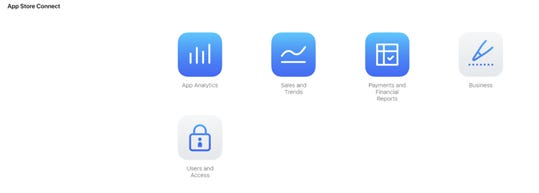Navigating Nuances in Apple Revenue Reporting for Month-End Close
Introduction to Apple Reporting:
If your company generates revenue from an app on the App Store, you're likely familiar with App Store Connect, Apple's portal used often by finance and accounting professionals to access valuable month-end close financial data. Within App Store Connect, several reports assist in financial reporting. Primary reports include the Financial Report and Financial Report Detail, found in the "Payments and Financial Reports" section. Draft versions of these reports are typically available about 15 days after month-end while finalized versions can take up to 2 months to process. These reports detail app sales and payments, pivotal for accounting and financial planning.
Apple Reporting Complexities:
Relying solely on the Financial Report poses challenges for most accounting and finance teams. The timing delay and 4-4-5 reporting schedule can prolong month-end close cycles. The 4-4-5 convention, spanning four or five weeks, can overlap calendar months, causing financial record inconsistencies. This mismatch complicates the revenue recognition and forecasting process, necessitating alternative solutions for accurate and timely reporting.
A Successful Alternative to Apple Reporting Challenges:
An effective alternative is the use of the Subscriber Report, which offers timely snapshots of company sales, proceeds, and Apple fees. Providing local currency values and daily transaction sales figures, it facilitates quick financial insights to leverage in close. Nonetheless, this alternative still presents ongoing challenges such as local currency presentation, sales-to-cash reconciliation discrepancies, and potential inclusion of prior-month transactions. These complexities demand additional reconciliation procedures for accuracy.
Addressing Subscriber Report Concerns:
Apple will wait for months before converting foreign transactions to the company's currency using a rate that they deem is fair. Given Apple's unknown rate selection to be used in the finalized Financial Report Detail two months from month end close, USD conversion is essential. Implementing an internally managed FX rate database facilitates daily conversion of Subscriber Report values to USD, ensuring consistent financial reporting. Timing and FX differences will cause some changes between the official reports and the subscriber reports. The differences attributable to timing usually offset within 1-2 months.
Subscriber reports often include an "Event Date" column, indicating the actual date of a transaction. However, when funds are delayed in transit or refunds take a long time to process, reports can include old transactions. For example, a report generated on June 1st may include a transaction from January 15th of the same year. To maintain financial data pipelines that preserve historical figures, it is essential to assign a new transaction date to each record, such as the date of the subscriber report. This approach ensures the pipeline remains perpetually and eventually consistent. Though not aligning precisely with cash received, this approach provides clearer USD sales, proceeds, and commissions insights. The timing and FX differences can often be attributed to a variance account that hits the P&L and are immaterial most months.
Conclusion:
In conclusion, App Store Connect’s Financial and Subscriber Reports present distinct challenges but employing a strategic approach enhances financial close efficiency and accuracy. By leveraging the Subscriber Report, robust FX practices, and variance management, your accounting team can successfully navigate the challenges posed by Apple Reporting.
At PCG, we streamline these complexities, using automation for a more accurate and efficient month-end close. For any questions, information or consultation, feel free to email us at jeremy.jestel@principalcg.com





